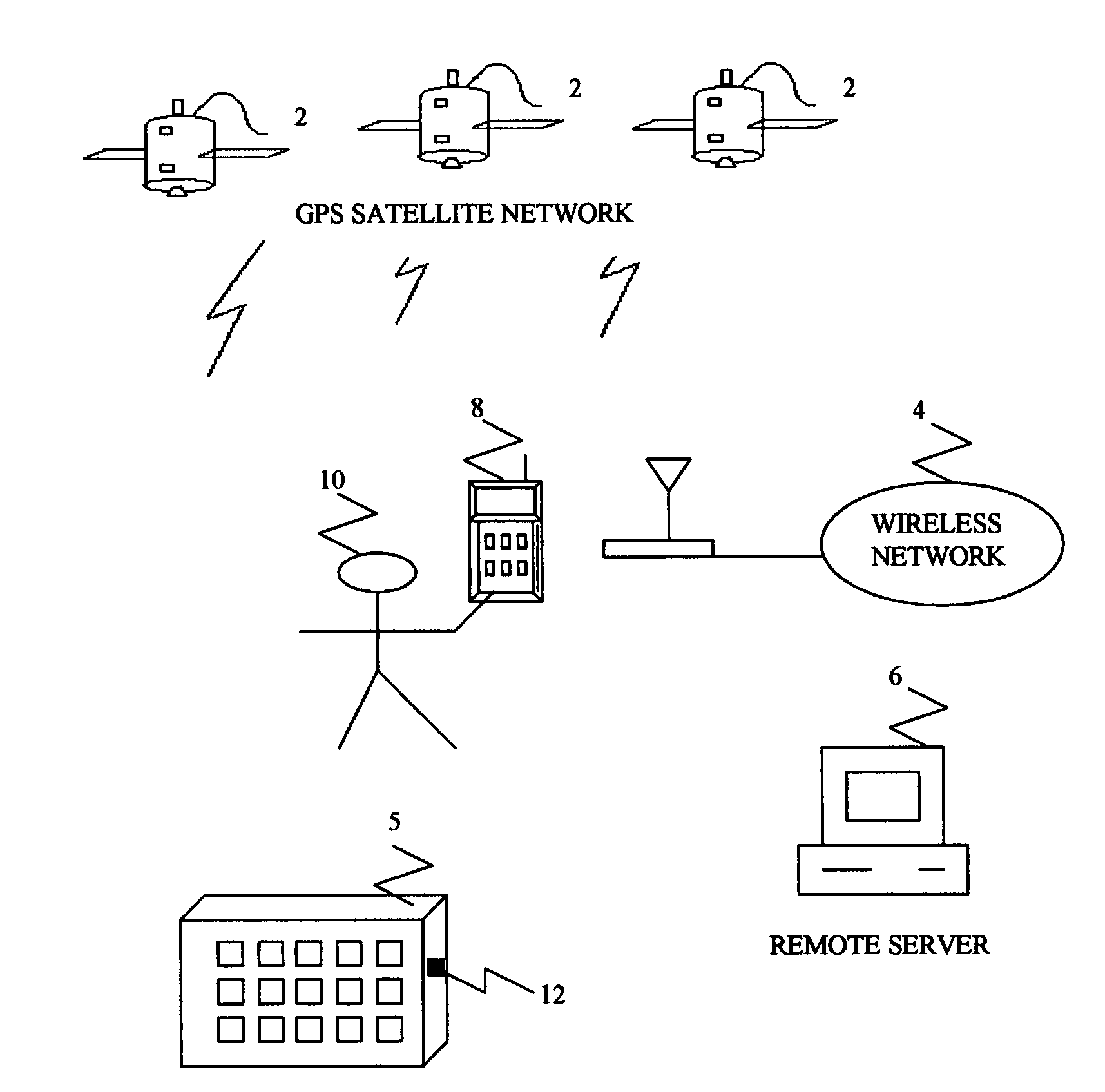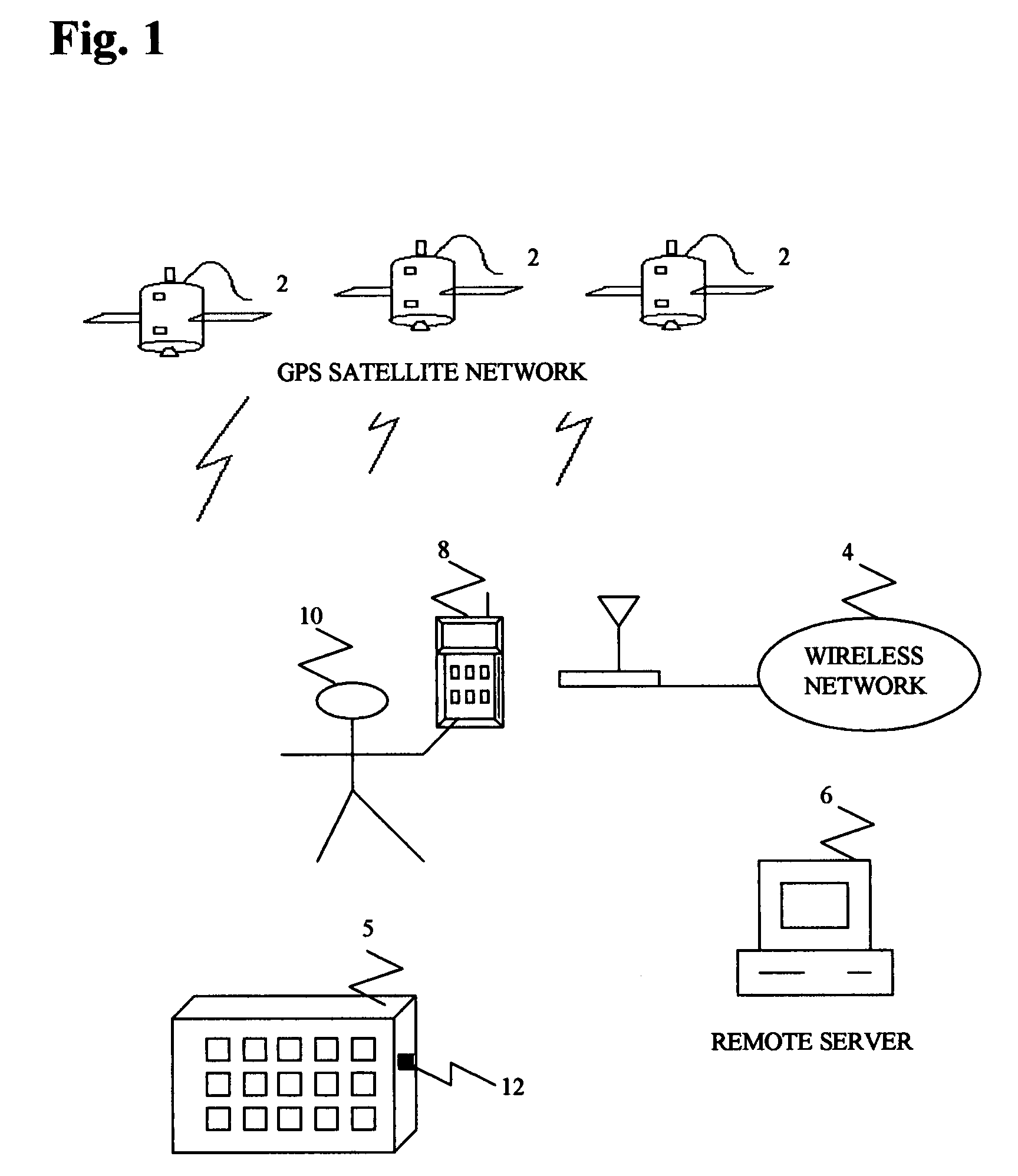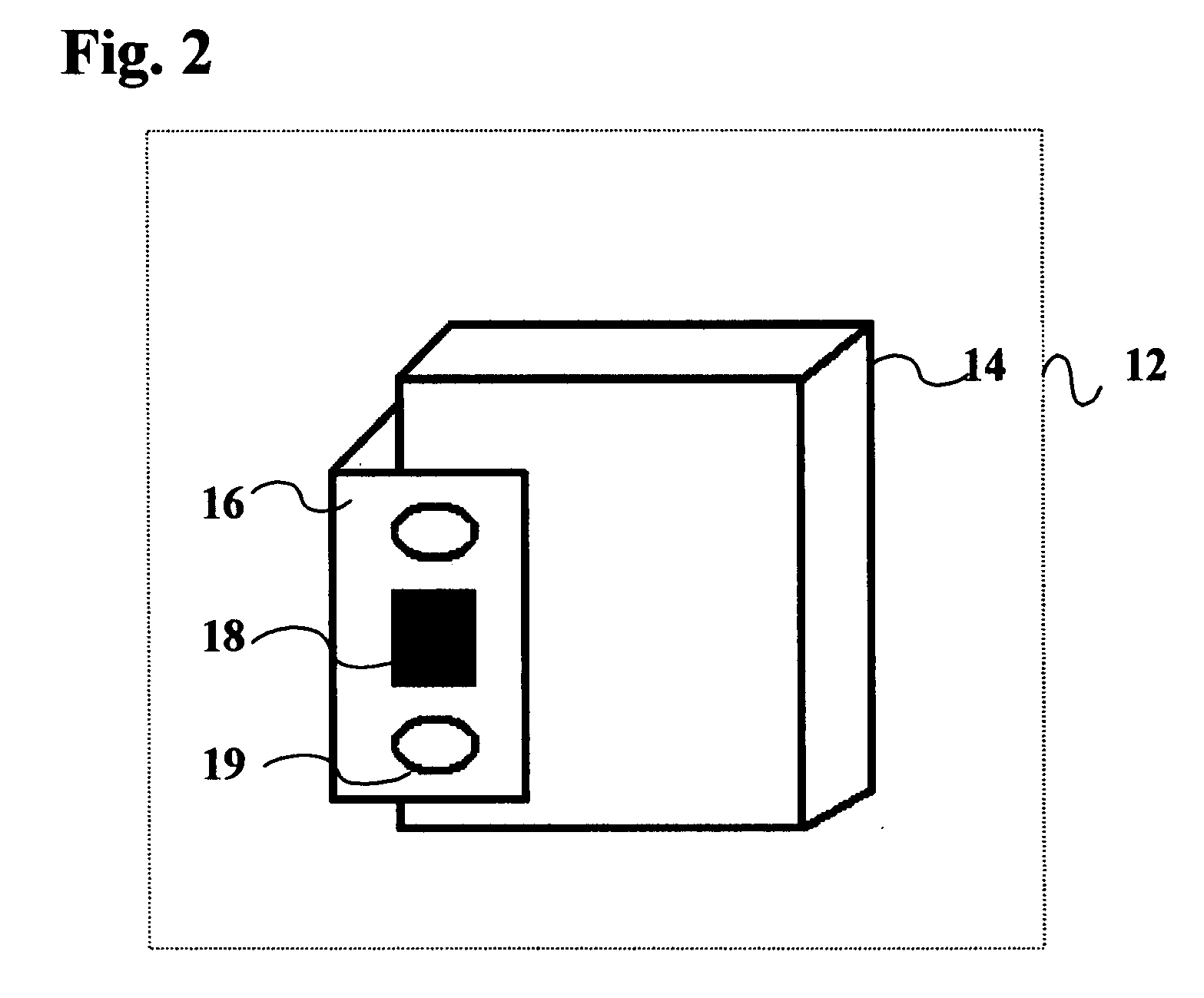Self contained container tracking device
- Summary
- Abstract
- Description
- Claims
- Application Information
AI Technical Summary
Problems solved by technology
Method used
Image
Examples
Embodiment Construction
[0038]Referring to FIG. 1, a container 5 equipped with a container tracking device 12 collaborates with GPS constellation 2 to determine position information.
[0039]Container tracking device 12 collaborates with wireless network 4 to receive commands and to send position information to user 10 either through remote server 6 or mobile unit 8.
[0040]Referring to FIG. 2, container tracking device 12 comprises restraint unit 16 used to attach the container tracking device housing 14 to a container door. Restraint unit 16 comprises an antenna system for the GPS and wireless transceiver systems as well as mechanism 19 for fastening the bracket to the container door.
[0041]FIG. 3 is a schematic illustrating a container tracking device 12 installed on a container door 30, whereby housing 14 is positioned adjacent to the container door, on the inside of the container, and restraint unit 16 with antennas for GPS and cellular receivers is positioned to the outside of the container.
[0042]Referring...
PUM
 Login to View More
Login to View More Abstract
Description
Claims
Application Information
 Login to View More
Login to View More - R&D
- Intellectual Property
- Life Sciences
- Materials
- Tech Scout
- Unparalleled Data Quality
- Higher Quality Content
- 60% Fewer Hallucinations
Browse by: Latest US Patents, China's latest patents, Technical Efficacy Thesaurus, Application Domain, Technology Topic, Popular Technical Reports.
© 2025 PatSnap. All rights reserved.Legal|Privacy policy|Modern Slavery Act Transparency Statement|Sitemap|About US| Contact US: help@patsnap.com



